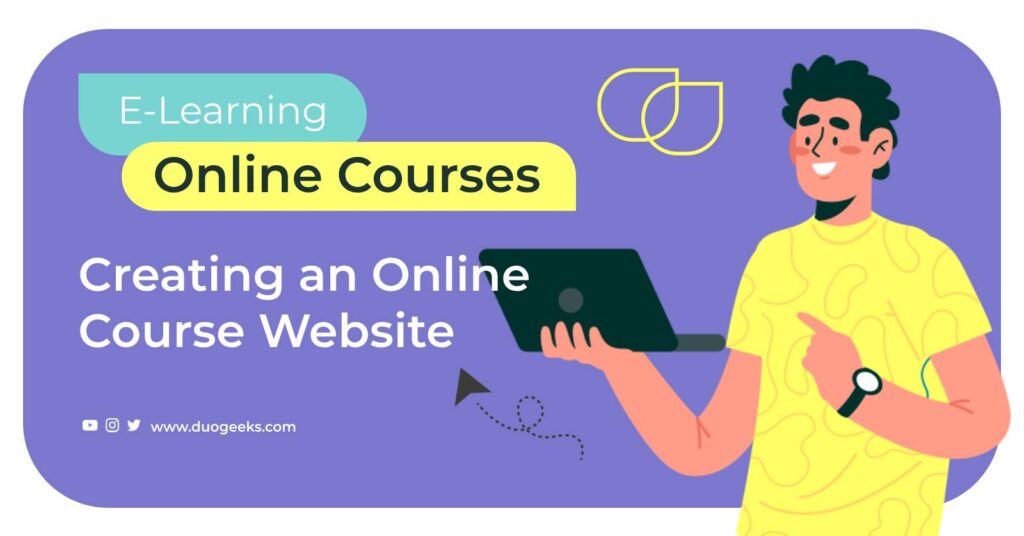Are you eager to share your knowledge and expertise with the world? Creating an online course website using WordPress is a fantastic way to do just that. With the right tools and guidance, you can build a platform that allows you to offer courses on any topic, both free and paid. In this article, we’ll walk you through the entire process of launching your course website, adding your content, and even monetizing it. Let’s dive in!
Part 1: Launch Your Website
The first step in creating your online course website is launching it. WordPress is an excellent platform for this purpose. Follow these steps to get started:
Step 1: Choose a Hosting Provider and Install WordPress
Select a reliable hosting provider like Bluehost, SiteGround, or WP Engine. Most hosting providers offer one-click WordPress installation. After purchasing your hosting plan, install WordPress and log into your dashboard.
Step 2: Select an LMS Plugin
To create and manage courses, you’ll need a Learning Management System (LMS) plugin. Popular options include:
- LearnDash: A robust and feature-rich plugin.
- LifterLMS: Great for building and selling courses.
- Tutor LMS: A user-friendly option with essential features.
Install and activate your chosen LMS plugin from the WordPress dashboard under the “Plugins” section.
Step 3: Install a Suitable Theme
Choose a WordPress theme that complements your course website. Themes like Astra, Divi, or Education Pro are excellent choices for online courses. Install and customize the theme by navigating to the “Appearance” section in the WordPress dashboard.
Part 2: Adding Your Courses
Now that your website is live, it’s time to add your courses. Here’s how to do it:
Step 1: Create a New Course
- Navigate to the LMS section of your dashboard (e.g., “LearnDash Courses”).
- Click “Add New” to create a new course.
- Enter the course name, description, and upload a featured image.
- Click “Publish” to save your course.
Step 2: Add Course Content
- Under your course, add sections or modules to structure the content.
- For each section, create lessons. Enter a title and upload text, images, or videos.
- Use platforms like Vimeo or YouTube to host your videos securely. Copy the video link and paste it into the lesson editor.
Step 3: Add Quizzes
To enhance engagement, include quizzes in your courses. Most LMS plugins have built-in quiz functionality. Add questions, set passing criteria, and link the quizzes to the relevant course section.
Part 3: Monetizing Your Course
Once your course is created, you may want to monetize it. Follow these steps:
Step 1: Configure WooCommerce
Install and activate the WooCommerce plugin to manage payments. Navigate to the WooCommerce setup wizard to configure basic settings.
Step 2: Create Paid Courses
- Go to the LMS plugin settings and set the course price.
- Use WooCommerce to create a product for each course and link it to the corresponding course in your LMS plugin.
Step 3: Set Up Payment Gateways
- Navigate to WooCommerce > Payments.
- Enable payment methods like Stripe or PayPal.
- Follow the prompts to connect these gateways to your website.
Step 4: Test the Purchase Process
Visit your course page, add the course to the cart, and complete a test purchase to ensure everything is working as expected.
Part 4: Adding Quizzes to Your Course
Quizzes help reinforce learning and engage students. To add quizzes:
- Navigate to your course and click on the “Quiz” section.
- Add questions (multiple choice, true/false, etc.) and configure the scoring settings.
- Save and assign the quiz to a course module.
Part 5: Getting Your Own Domain Name
A custom domain name makes your website look professional. Here’s how to set it up:
Step 1: Purchase a Domain
Use a domain registrar like Namecheap, GoDaddy, or Google Domains. Search for an available domain and complete the purchase.
Step 2: Connect Your Domain
In your hosting account, update the DNS settings to point to your WordPress site. This may involve adding A and CNAME records provided by your hosting provider.
Step 3: Verify and Test
After updating the DNS, wait for the changes to propagate (usually a few hours). Visit your domain to ensure it redirects to your WordPress site.
Part 6: Editing Your Website
Keep your website updated to ensure it remains relevant and engaging. Use the WordPress block editor (or Elementor if you prefer) to modify text, images, and layouts. Don’t forget to:
- Update course content regularly.
- Check for plugin and theme updates.
- Optimize for mobile devices.
Final Thoughts
Creating an online course website with WordPress is an exciting and rewarding venture. With the steps outlined above, you can launch, manage, and monetize your courses effectively. Ready to get started? Choose a hosting provider, install WordPress, and start sharing your knowledge with the world today!
FAQ
Can I create both free and paid courses? Yes, you can offer a mix of free and paid courses using your LMS plugin.
Do I need technical skills to set up my website? No, WordPress and LMS plugins are designed to be user-friendly, requiring minimal technical expertise.
How can I ensure my videos are secure? Use platforms like Vimeo or private YouTube links to protect your video content.
What payment methods can I use? WooCommerce supports various payment methods, including Stripe, PayPal, and direct bank transfers.



